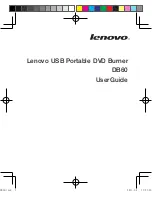
6.5 Cooling
NOTICE
Improper mounting can result in overheating and
reduced performance. For proper mounting, refer to
chapter 6.4 Mounting Configurations
•
Ensure that top and bottom clearance for air
cooling is provided. Clearance requirement:
225 mm (9 in).
•
Provide sufficient airflow flow rate. See
.
•
Consider derating for temperatures starting
between 45
°
C (113
°
F) and 50
°
C (122
°
F) and
elevation 1000 m (3300 ft) above sea level. See
for detailed information on
derating.
The drive utilizes a back-channel cooling concept that
removes heat sink cooling air. The heat sink cooling air
carries approximately 90% of the heat out of the back
channel of the drive. Redirect the back-channel air from
the panel or room by using:
•
Duct cooling
Back-channel cooling kits are available to direct
the heat sink cooling air out of the panel when
IP20/Chassis drives are installed in Rittal
enclosures. Use of these kits reduce the heat in
the panel and smaller door fans can be specified.
•
Back-wall cooling
Installing top and base covers to the unit allows
the back-channel cooling air to be ventilated out
of the room.
Secure the necessary airflow over the heat sink.
Frame
Door fan/top fan
[m
3
/hr (cfm)]
Heat sink fan
[m
3
/hr (cfm)]
J8
102 (60)
420 (250)
J9
204 (120)
840 (500)
Table 6.2 J8–J9 Airflow Rate
6.6 Derating
Derating is a method used to reduce output current to
avoid tripping the drive when high temperatures are
reached within the enclosure. If certain extreme operating
conditions are expected, a higher-powered drive can be
selected to eliminate the need for derating. This is called
manual derating. Otherwise, the drive automatically
derates the output current to eliminate the excessive heat
generated by extreme conditions.
Manual derating
When the following conditions are present, Danfoss
recommends selecting a drive 1 power size higher (for
example N132 instead of N110):
•
Low-speed – continuous operation at low RPM in
constant torque applications.
•
Low air pressure – operating at altitudes above
1000 m (3281 ft).
•
High ambient temperature – operating at
ambient temperatures of 10
°
C (50
°
F).
•
High switching frequency.
•
Long motor cables.
•
Cables with a large cross-section.
Automatic derating
If the following operating conditions are found, the drive
automatically changes switching frequency or switching
pattern (PWM to SFAVM) to reduce excessive heat within
the enclosure:
•
High temperature on the control card or heat
sink.
•
High motor load or low motor speed.
•
High DC-link voltage.
6.6.1 Derating for Low-Speed Operation
When a motor is connected to a drive, it is necessary to
check that the cooling of the motor is adequate. The level
of cooling required depends on the following:
•
Load on the motor.
•
Operating speed.
•
Duration of operating time.
Constant torque applications
A problem can occur at low RPM values in constant torque
applications. In a constant torque application, a motor can
overheat at low speeds because less cooling air is being
provided by the fan within the motor.
If the motor is run continuously at an RPM value lower
than half of the rated value, the motor must be supplied
with extra air cooling. If extra air cooling cannot be
provided, a motor designed for low RPM/constant torque
applications can be used instead.
Variable (quadratic) torque applications
Extra cooling or derating of the motor is not required in
variable torque applications where the torque is propor-
tional to the square of the speed, and the power is
proportional to the cube of the speed. Centrifugal pumps
and fans are common variable torque applications.
Mechanical Installation Con...
Design Guide
MG06K102
Danfoss A/S © 03/2019 All rights reserved.
35
6
6
Содержание VLT AutomationDrive FC 361
Страница 2: ......
















































